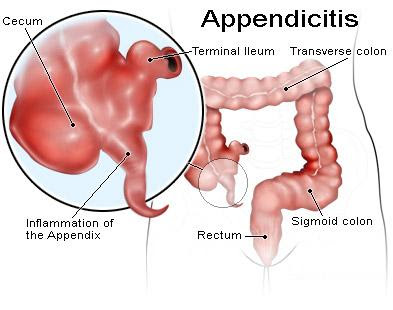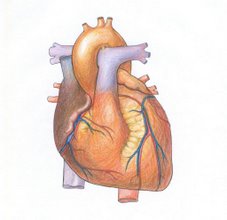Cancer
Cancer is a disease of the cells in the body. There are many different types of cells in the body, and thereby many different types of cancer. In all types of cancer, cancer cells are abnormal and multiply uncontrollably. Some cancers are more serious than others, some are more easily treated than others (particularly if diagnosed at an early stage), and some have a better outlook than others. So, cancer is not just one condition. In each case it is important to know exactly what type of cancer has developed, how large it has become, whether it has spread, and how well it usually responds to treatment.
Normal body cells
The body is made up of billions of tiny cells. Different parts of the body such as organs, bones, muscles, skin, and blood are made up from different specialized cells. All cells have a center called a nucleus. The nucleus in each cell contains thousands of genes, which are made up from a chemical called DNA. The genes control the functions of the cell. For example, different genes control how the cell makes proteins, or hormones, or other chemicals. Certain genes control when the cell should multiply, and certain genes even control when the cell should die. Most types of cells in the body divide and multiply from time to time. As old cells wear out or become damaged, new cells are formed to replace them. Some cells normally multiply quickly. For example, millions of red blood cells are made each day as old ones become worn out and are broken down. Some cells do not multiply at all once they are mature, for example, brain cells. Normally, body only makes the right number of cells that are needed.
Abnormal cells
Sometimes a cell becomes abnormal. This occurs because one or more of the genes in the cell has become damaged or altered. The abnormal cell may then divide into two, then four, then eight, and so on. Lots of abnormal cells may then develop from the original abnormal cell. These cells do not know when to stop multiplying. A group of abnormal cells may then form. If this group of cells gets bigger, it becomes a large lump of abnormal cells called a tumour.
Tumours
A tumour is a 'lump' or 'growth' of tissue made up from abnormal cells. Tumours are of two types - benign and malignant.
Benign tumours
These may form in various parts of the body. Benign tumours grow slowly, and do not spread or invade other tissues. They are not 'cancerous' and are not usually life-threatening. They often do no harm if they are left alone. However, some benign tumours can grow quite large and may cause local pressure symptoms, or look unsightly. Also, some benign tumours that arise from cells in hormone glands can make too much hormone, which can cause unwanted effects.
Malignant tumours ('cancers')
Malignant tumours grow quite quickly, and invade into nearby tissues and organs, which can cause damage. The original site where a tumour first develops is called a primary tumour. Malignant tumours may also spread to other parts of the body to form 'secondary' tumours (metastases). This happens if some cells break off from the primary tumour and are carried in the bloodstream or lymph channels to other parts of the body. These secondary tumours may then grow, invade and damage nearby tissues, and spread again. All cancers do not form solid tumours. For example, in cancer of the blood cells (leukemia) many abnormal blood cells are made in the bone marrow and circulate in the bloodstream.
Causes
Each cancer first starts from one abnormal cell. Certain vital genes, which control how cells divide and multiply, are damaged or altered. This makes the cell abnormal. If the abnormal cell survives it may multiply uncontrollably into a malignant tumour. Everyone has a risk of developing cancer. Many cancers develop for no apparent reason. However, certain risk factors increase the chance that one or more of cells will become abnormal and lead to cancer.
Risk factors for developing cancer
A carcinogen is something that can damage a cell and increases possibility to turn into a cancerous cell. More the exposure to a carcinogen, the greater is the risk. Well known examples include:
Chemical carcinogens:
Tobacco smoke: Smokers are likely to develop cancer of the lung, mouth, throat, esophagus, bladder and pancreas. About 10% of smokers die from lung cancer. Heavier the smoker, the greater is the risk.
Workplace chemicals: Such as asbestos, benzene, formaldehyde, etc.
Age: Older people are more likely to develop a cancer. This is probably due to an accumulation of damage to cells in the body over time. Also, the body's resistance against abnormal cells may become weaker in older people. For example, the ability to repair damaged cells, and the immune system, which may destroy abnormal cells, may become less efficient with age. So, eventually one damaged cell may manage to survive and multiply uncontrollably into a cancer. Most cancers develop in older people.
Diet: Diet increases or decreases the risk of developing cancer. For example, eating fruit and vegetables reduces risk of developing certain cancers. These foods are rich in vitamins, minerals, and contain chemicals called 'anti-oxidants'. Antioxidants protect against damaging chemicals that get into the body. Fatty food possibly increases the risk of developing certain cancers. Obesity, lack of regular exercise, and drinking a lot of alcohol increases possibility of certain cancers.
Radiation: Radioactive materials and nuclear 'fallout' can increase the risk of developing leukemia and other cancers. Too much sun exposure and sunburn (radiation from UVA and UVB) increase the risk of developing skin cancer. Larger the dose of radiation, the greater is the risk of developing cancer.
Infection: Some viruses are linked to certain cancers. For example, persistent infection with the hepatitis B virus or the hepatitis C virus has an increased risk of developing cancer of the liver. However, most viruses and viral infections are not linked to cancer.
Immune system: People with a poor immune system have an increased risk of developing certain cancers. For example, people with AIDS, or people on immunosuppressive therapy.
Genetic make-up: In some people their genetic make-up is less resistant to the effect of carcinogens or other factors such as diet.
Combination of factors
In many cases it is likely that a combination of factors such as genetic make-up, exposure to a carcinogen, age, diet, the state of immune system, etc, play a part to trigger a cell to become abnormal, and allow it to multiply 'out of control' into a cancer.
Diagnosis
- Symptoms of abnormalities such as a lump under the skin or an enlarged liver.
- Tests such as X-rays, scans, blood tests, endoscopy, colonoscopy, bronchoscopy, etc, depending on where the suspected cancer is situated. These tests can often find the exact site of a suspected cancer.
- Biopsy: A biopsy is removal of small sample of tissue from a part of the body. The sample is then examined under the microscope to look for abnormal cells.
Treatment options
Treatment options vary, depending on the type of cancer and how far it has grown or spread. The three most common treatments are:
Surgery - It may be possible to cut out a malignant tumour.
Chemotherapy - Use of anti-cancer drugs to kill cancer cells, or to stop them from multiplying.
Radiotherapy – High energy beams of radiation are focused on cancerous tissue to kill cancer cells, or stop cancer cells from multiplying.
Other treatments include:
Bone marrow transplant. High dose chemotherapy may damage bone marrow cells and lead to blood problems. However, if patient receives healthy bone marrow after the chemotherapy then this helps to overcome this problem.
Hormone therapy. Drugs are used to block the effects of hormones. This treatment is useful for cancers that are 'hormone sensitive' such as some cancers of the breast, prostate and uterus.
Immunotherapy. Some treatments can boost the immune system to help to fight cancer. More specific immunotherapy involves injections of antibodies which aim to attack and destroy certain types of cancer cells
Gene therapy is a new area of possible treatments
Special techniques – cutting off the blood supply to tumours to kill it.
For some cancers, a combination of two or more treatments may be used. A range of other treatments may also be used to ease cancer related pain
Aims of treatment
The aims of treatment can vary, depending on the cancer type, size, spread, etc.
Cure (remission): With modern drugs and therapies, many cancers can be cured, particularly if they are treated in the early stages of the disease.
Control the cancer: If a cure is not realistic, with treatment it is often possible to limit the growth or spread of the cancer so that it progresses less rapidly.
Ease of symptoms: Even if a cure is not possible, a course of radiotherapy, an operation, or other techniques may be used to reduce the size of a cancer, which may ease symptoms such as pain.
Outlook
Some cancers are more 'aggressive' and grow quicker than others. Some cancers are more likely to spread to other parts of the body. Some cancers respond to treatment better than others. As a general rule, the outlook is usually better if cancer is detected earlier and treated.
 Google views its expansion into health records management as logical because its search engine already processes millions of requests from people trying to find information about injuries, illnesses and treatments. Before this public launch, Google stored medical records for a few thousand patients at the nonprofit Cleveland Clinic.
Google views its expansion into health records management as logical because its search engine already processes millions of requests from people trying to find information about injuries, illnesses and treatments. Before this public launch, Google stored medical records for a few thousand patients at the nonprofit Cleveland Clinic.


